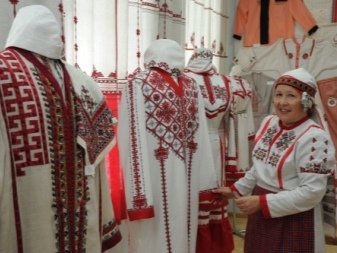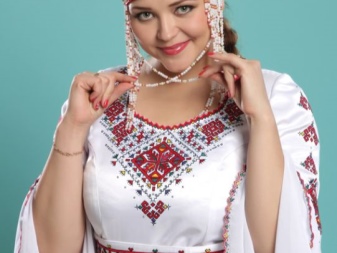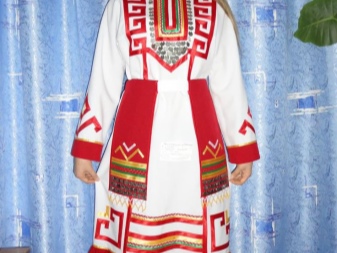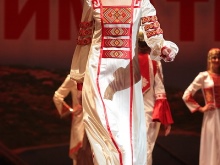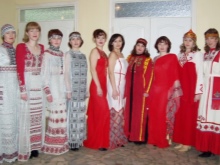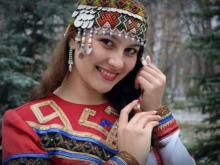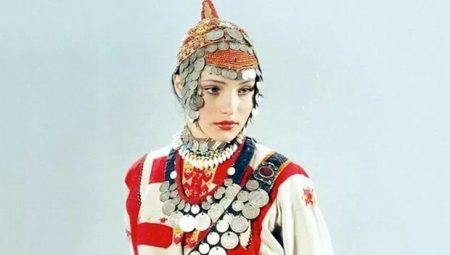The history of the Chuvash folk costume
The formation of the Chuvash folk costume took place under the influence of the place in which the Chuvash lived, adopting many of the little things and details of the clothes of the nearest neighbors. The traditional outfits of the viryal (they are the supreme Chuvash) from the Cheboksary district strongly resembled the costumes of the Finno-Ugric people of Russia with their simplicity and moderation of structural elements.
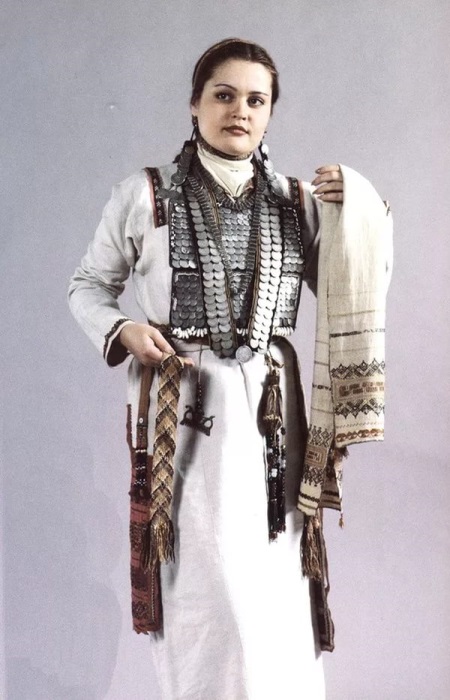
Grassroots Chuvashs, they are also Antari, used different ruffles while sewing dresses and suits, and saturated red was chosen as the color of the apron. Towels and aprons had an unusual embroidery with colored threads of various shades. Costumes, dresses, bibs and hats of the Chuvashs of the Samara region have a lot of similarities with Mordovian national costumes.
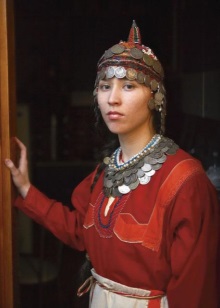
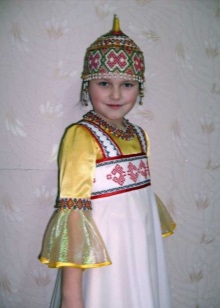
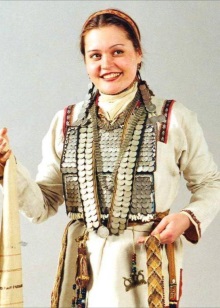
Chuvash costume materials
For quite a long time, the Chuvash people made fabrics and various natural dyes on their own. To dye yarn, it was necessary to spend a lot of time, because of which the main color of costumes and dresses was an ordinary white color.
Soon, the Antari acquired aniline dyes, which greatly facilitated the process of dyeing yarn, and this gave an impetus to the development of production of such material as motley. Then the motley clothes were replaced with ordinary white costumes. Viryals did not use motley in the manufacture of clothes and dresses.
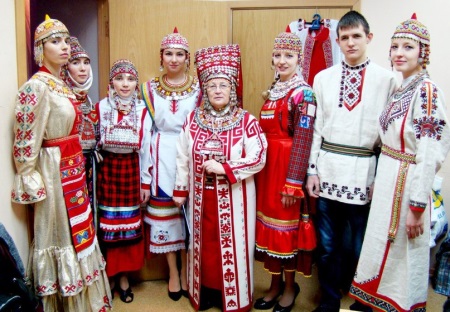
Costumes colors
White color represented purity and was the main one in traditional costumes and dresses of the Chuvash. A fresh white shirt was put on for various holidays and festivities. Often, rich red was combined with the main white color, which also symbolized purity, holiness and life, so almost all the seams of suits and dresses were covered with red braid.
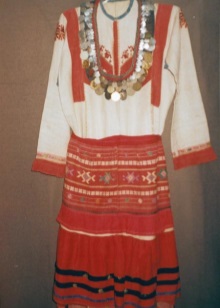
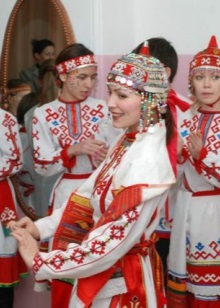

For the manufacture of clothing, the Chuvash used a special fabric of threads of different colors (this fabric was called colorful) and began dressing in dresses and shirts of this material both for various celebrations and for ordinary work in the field. The older generation was extremely dissatisfied and worried about this, because of which the categorical prohibition on dressing from motley was sometimes enforced, and if this rule was violated, the violator was doused with 41 buckets of ice water.
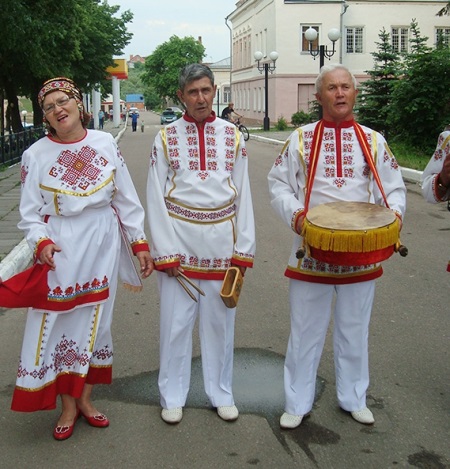
Outfit design
A white shirt (aka kep) was an integral element of both female and male folk costumes. The shirt design was quite simple: hemp canvas folded, and wedges were sewn into the sides, expanding the shirt at the bottom. Shirts for women's suits were made with a length of 120 cm and a neckline in the center on the chest. Men's shirts had similar cuts on the sides.
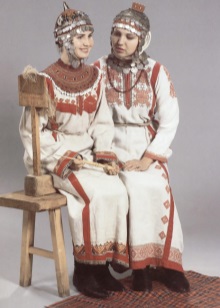

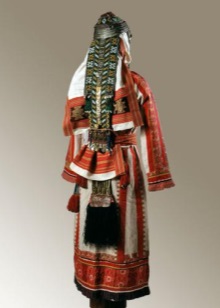
Men's suits
Initially, Chuvash shirts with a belt for men were made loose and long (to the knees). Men's clothes had various rich and festive embroideries, appliqués and silk patterns, while simple suits, not intended for the holidays, were quite concise and austere, and no patterns were applied to them.
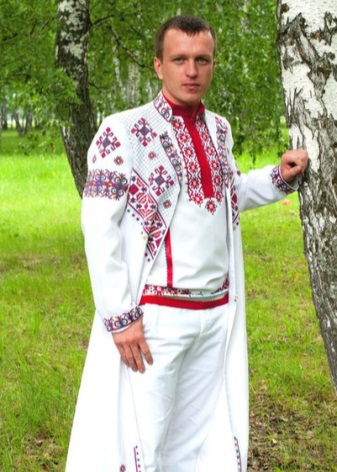
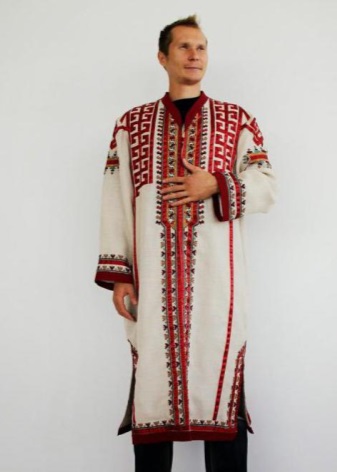
In the distant past, men were required to wear clean white shirts for pagan rites. With the development of new technologies, the Chuvash folk costume for men acquired a collar and became more modern, with smooth lines of round armholes. Men's caftans and gowns, designed for various holidays, were generously decorated in the chest and collar area, as well as around the edges of clothes.
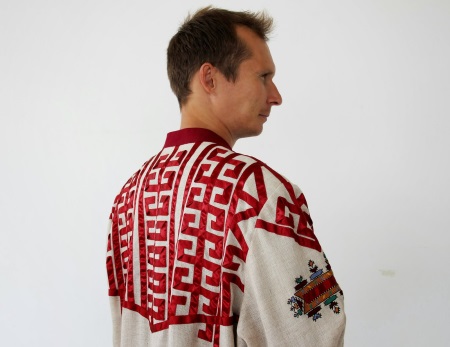
Women's costumes
Chuvash traditional shirts for married women had rather complicated embroidery of an unusual shape, while the hem with geometric stripes and stripes was modest and simple. During the holidays and on ordinary weekdays, women wore special material on the hips with fringe, patterns and stripes, made of silk and wool threads.
Unmarried girls wore modest outfits without embroideries and patterns, so as not to distract attention from their own beauty.
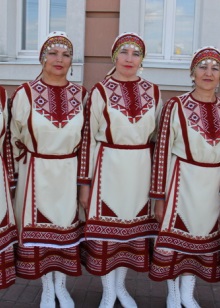
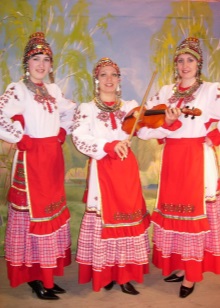
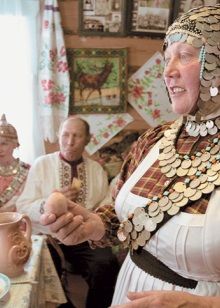
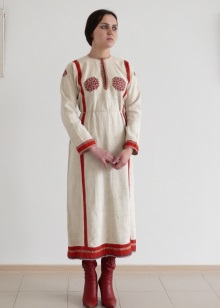
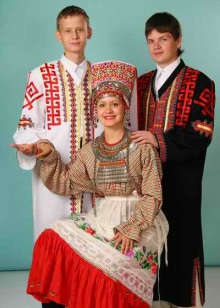
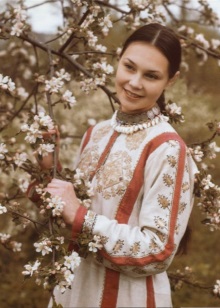
Women's jewelry with beads
Jewelry sets with silver coins, details from beads and expensive stones make up:
- women's hats (hushpu);
- outfits on the neck and chest (for the Chuvash they are called ama, alka, may);
- bracelets and rings (they are bast and sulfur);
- a small mirror that is attached to the belt (teker);
- belt wallet
- pendants on a belt (yos hure).
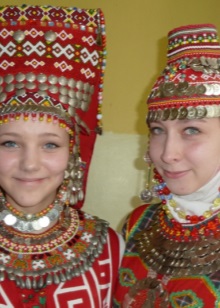
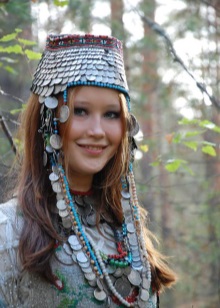

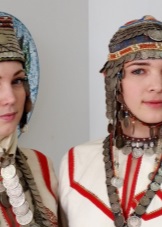
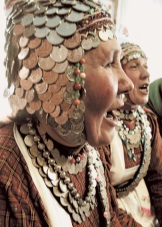
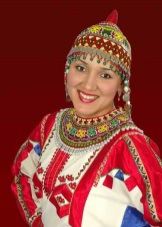
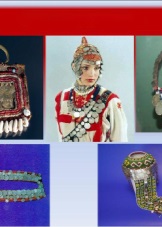
Wedding suit
The Chuvash wedding outfit had the following interesting details:
- the bride’s dress was decorated with beads, shells and coins, creating a large and complex pattern, complemented by a special headdress;
- the bride’s shirt, apron and outerwear were decorated with chic embroidery, in addition, the girl put on rings, bracelets, pendants and a purse with a small mirror on her belt (it is worth noting that this outfit weighed about 16 kg.);
- the Chuvash wedding suit had one important detail, such as a perkenechka (large white material or a bedspread) with rich embroideries around the edges, under which the bride was for a certain time, after which the bedspread was removed and the girl was changed into a married woman's suit;
- the groom dressed in a shirt and a caftan with a wide color belt, and also put on gloves, boots and a fur hat with a coin in the forehead.
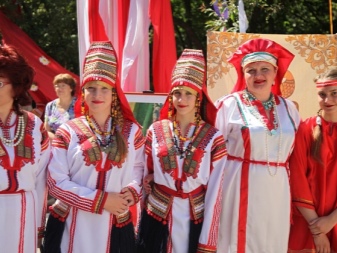
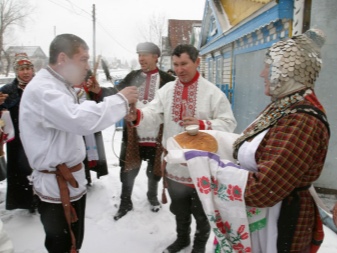
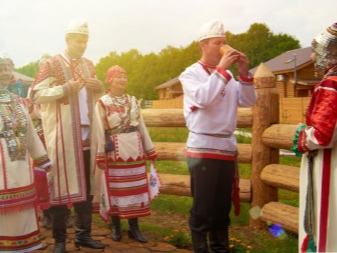
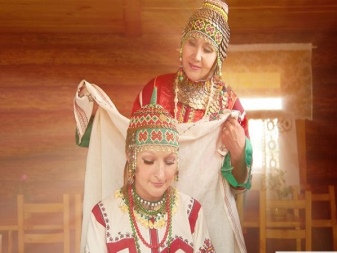
Children's suits
Children's Chuvash folk costumes were distinguished by their richness and luxury of embroidery. The clothes for the girls were quite simple and were decorated with braid or simple patterns that were sewn onto the hem. The head was covered with ordinary jewelry with beads and braid. Older girls wore beaded jewelry that was attached to the belt from the back.
Costumes for small men were quite simple and differed only in bright ornaments on the collar.
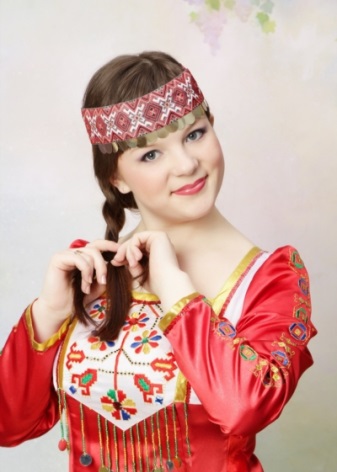
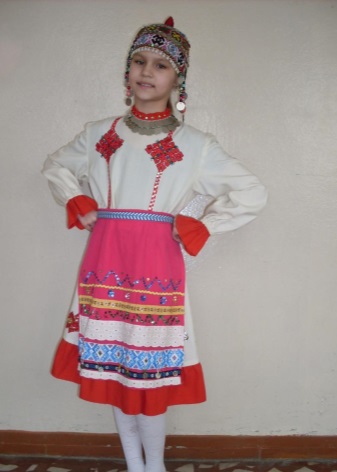
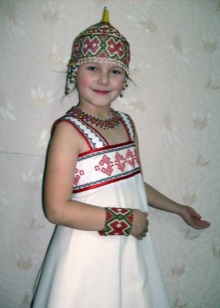

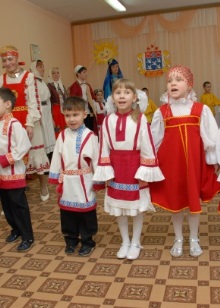
Women's hats and bedspreads
In ancient times, women's Chuvash hats were represented by hats and bedspreads.
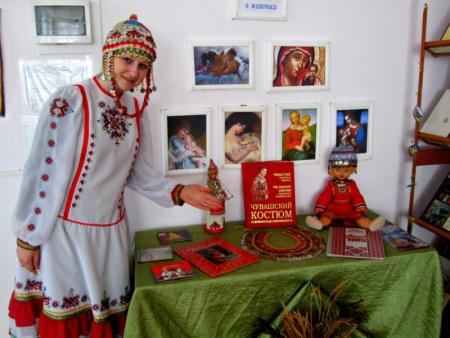
The bedspreads included surpans (headbands) of various lengths, turban, shawls and bedspreads of the bride, which were intended exclusively for married women.

A long or short (with narrower patterns) a turban of grassroots dudes completely covered his head, and its edges were generously embroidered and decorated with patterned stripes, ornaments and lace. The surpans of the riding chuvash were quite short and were decorated with embroideries on both sides, representing interesting ornaments, embroidered in tiers, as well as fringe and beads at the ends. Headwear and headbands were quite different in groups.
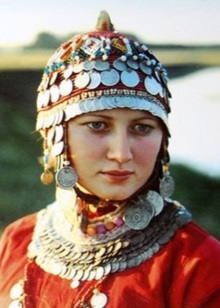
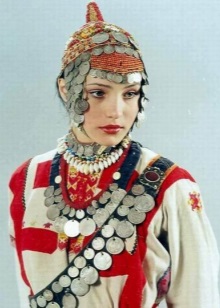
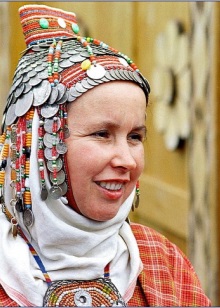
Jewelry amulets
In the rich national costume of the Chuvash, there are a lot of small, but rather important details and jewelry indicating the woman's affiliation, age and social status.
Numerous jewelry of women's dresses (coins, shells, beads) are primarily a protection against evil spirits, enemies and various dangers. For holidays or weddings, the Chuvash put on a full set of amulets, which weighed more than 10 kg.
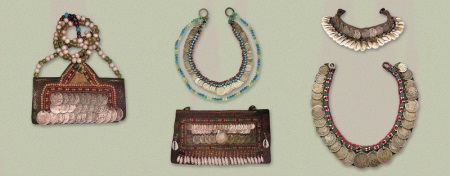
Footwear
In the summer season, Chuvash men and women wore bast shoes. These shoes were woven in various and rather tricky ways, which is why some models have survived to this day and are currently in the museum. Comfortable cloth leggings were worn with bast shoes. When winter came, the Chuvash cleaned their bast shoes and put on warm boots, which were simply impossible to do without.
At the end of the 19th century, it was a tradition to donate leather boots for sons and daughters' leather boots, which were subsequently worn very rarely and very carefully.
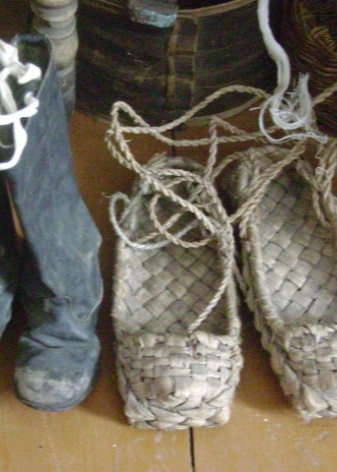
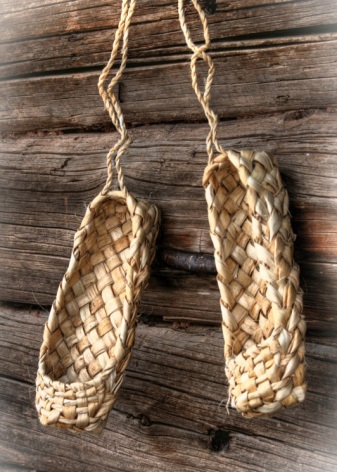
Modern fashion of Chuvashia
Currently, the traditional national costume of the Chuvash has lost its relevance and only in some villages and villages Chuvash outfits are worn during the holidays or rituals.
The national costume is often used during various concerts and performances of folk groups. Fashion designers no longer rely on traditional costumes and shirts in their designs, but use some similar images in attempts to produce all the details of folk jewelry, ornaments and patterns.

